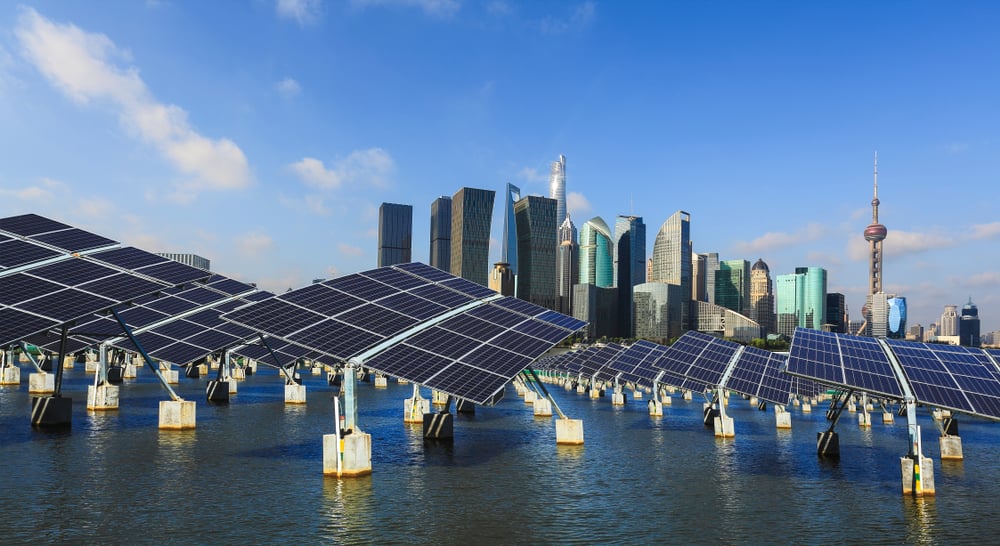Why I Am Still Optimistic on China
It’s chic to be bearish about China these days. You don’t even need to look at the stock charts. Just sample a few of the headlines.
"European businesses are rethinking their plans for a ‘closed’ China,’” states a recent report from CNBC. "Tech Companies Slowly Shift Production Away from China," according to the New York Times. Bloomberg offers up a breathless account, "This is What Life's Like in the World's Strictest COVID Zero City." Business Insider informs us that the next generation of Chinese has turned its back on American education, "Chinese students have helped bankroll the US economy. Now fewer want to study here, and it risks America's position as a global leader." While the Atlantic speculates that the impending doom of China may be a good thing for Americans, "China’s Mistakes Can Be America’s Gain."
From the tone of these articles, one might imagine China is declining into the economic equivalent of a zombie apocalypse. Of course, the fact that most of the reporters, editors, and pundits on the “China beat” have not been able to set foot in the PRC for nearly three years doesn’t engender nuanced reporting.
So, with all this bad news, why do I remain a cockeyed optimist about China and the potential for a fruitful transpacific partnership between China and the US?
Data Paints a Brighter Picture than the Headlines
As an accountant, I tend to focus on the numbers, and a different story emerges when you look at the data.
- China’s inbound foreign direct investment is up by 20% in the first eight months of 2022 —multinationals aren’t abandoning China; they are doubling down. 60% plan to expand their operations in China this year, per a PwC survey.
China has dominated global equity listings this year, with six out of the world’s biggest IPOs on the A-share market and far outstripping proceeds raised on the NYSE and NASDAQ, according to Bloomberg. - China is the world’s new energy superpower, producing over 80% of all solar panels and 56% of the batteries required to power electric vehicles, per the IEA and Arena EV.
China cannot be ignored as a force in the world. My thesis is that the door to engagement with China remains half open, not slammed shut.
-1.jpg?width=648&height=425&name=Destroying_Chinese_war_junks%2c_by_E._Duncan_(1843)-1.jpg)
To frame this discussion, it is helpful to think about the phrase “open door” and how it resonates differently in American and Chinese ears.
To Americans, an “open door” to China suggests free access to markets,
rules-based trading systems, market-based economics, and the chance, if we are honest, to reap immense riches from China’s massive consumer population and economic progress.
Those who remember their Chinese history will recall the “Open Door Policy” promulgated by U.S. Secretary of State John Jay in 1899. Jay declared that this policy was “justly held” by America and Great Britain as “the only one which will improve existing conditions, enable them to maintain their positions in the markets of China, and extend their operations in the future.”
But to Chinese ears, the “open door policy” invokes images of gunboat diplomacy prying open the Chinese market by blasting Chinese ships, the forced mass addiction of Chinese to British opium, and a hundred years of trampled sovereignty and humiliation. They will also recall that the “open door” to their markets was proclaimed after Congress had slammed shut all future immigration from China with the Chinese Exclusion Act of 1882.
Only by understanding this history of where our relationship has come from can we understand the oscillating policies of China toward engagement with the outside world and the tensions embedded in our relationship.
Engaging with China with a Door Half Open
What does it mean to have a door that is “half-open?”
China has shifted from a full-throated embrace of globalization to the “dual circulation strategy.” This new stance seeks to balance the global integration that made China prosperous while hardening restrictions on security-related sectors, reducing China’s dependence on critical technology inputs, and promoting indigenous innovation.
China remains “open for business,” but only on China’s terms. MNCs still have very substantial market opportunities, but only if their business growth is aligned with China's economic policy and industrial planning goals and if they are willing to play by Chinese rules. Businesses that threaten sectors deemed vital to core interests or offend Chinese sensibilities, even if unwittingly, will face severe consequences.
Businesses must adapt and adjust their risk calculations for an era of sustained heightened geopolitical tensions. The recent conflict in Ukraine has shown how a regional hot war can upend global markets overnight. But even ratcheting diplomatic tensions may entail collateral casualties. Companies and investors need to “thread the needle” between Chinese preferential policies for domestic players, increasing U.S. sanctions regime, and unpredictable geopolitical events.
China Post-COVID
Companies have also realized that the COVID-19 era has drastically changed how we do business in China, perhaps forever.

Companies’ global top management has been locked out of China since early 2020, given that few can afford the extended quarantines and risk of getting locked down that a trip to China entails so long as the policy of “dynamic zero COVID” persists. In response, companies have had to develop digital infrastructure and resilient local teams who can operate with a high degree of autonomy.
China is far less attractive to foreign talent. Most expatriates find the combination of travel restrictions, legal risks, and enhanced security and surveillance unpalatable, meaning that companies must invest in and grow local talent who can interact with foreign experts virtually.
The digital divide with China has become a chasm, as many virtual platforms used to run collaborative digital businesses in the West have been walled off, and China’s “great firewall” has become increasingly impenetrable. China's digital communications and business infrastructure are increasingly incompatible with Western platforms, and Chinese platforms are opaque and inaccessible to non-Chinese users.
Given the factors above, companies are increasingly considering hiving off their Chinese operations from the rest of the world, from an operational and even a capital markets perspective. Certain MNCs may even embrace an A-share or Hong Kong listing for their China operations to anchor it with Chinese investors and government, obtain growth financing in local currency, and monetize the value of a higher growth business segment.
Essential China Themes for Investors and Management
Some brave investors and corporate teams have decided that now when others have thrown in the towel, is precisely the right time to engage with China.
I would urge those seeking to deploy their capital or talents to work in China to keep several critical themes in mind.
First, the seemingly unstoppable growth of China’s export machine is unsustainable and will revert to mean. As developed markets go into recession, their ability to absorb limitless Chinese goods will be constrained. The U.S. and Europe have become acutely aware of the national security and supply chain risks associated with their prior embrace of unadulterated globalization and the associated hollowing out of the industrial base. Expect a sustained period of strategic industrial policy by advanced economies and a strategic diversification of supply chains by MNCs. These companies want to reduce their vulnerabilities to future flares in regional tensions.
Second, cracks have appeared in China’s traditional model of driving top-down GDP growth based on speculative real estate and government-funded infrastructure. China’s real estate developers are severely wounded, apartment buyers are on strike, bank balance sheets are stressed, and infrastructure has reached the “bridge to nowhere” stage recalling Japan in the 1990s.
Given this, it falls to the Chinese consumer to finally “save the day” for China’s economy — place it on a more sustainable footing with a lower overall GDP growth rate but with a greater quality of growth and improved returns on invested capital. This is the path taken by every “Asian Tiger” in the past, and China is simply an Asian Tiger on Steroids.
These changes will create three essential themes for investors to consider.
OPPORTUNITY #1: PLAY GROWTH OF SOUTHEAST ASIA

Southeast Asia is positioned to be a primary beneficiary of the quest for supply chain resilience. Countries like Vietnam, Indonesia, Malaysia, and the Philippines tout their affordable labor forces, improving logistics and infrastructure, and favorable policy orientation towards the U.S. and Europe. While none has the scale to displace China’s dominant position, they will all benefit from capital and western expertise inflows.
The IMF has forecast that China's share of global export growth will fall from #1 at 6.6% in 2016-21 to #8 to 3.4% from 2022 through 2026. Over that same period, Southeast Asia’s share is forecast to rise to the #1 position with 5.6% growth between 2022 and 2026.
Southeast Asia also has demographic tailwinds in its favor, with a far younger population than North Asian countries and only 50% of the people living in urban areas. Its consumers have a ravenous appetite for consumer goods and services that will support a more balanced economic development profile as a more significant proportion move into the middle class. Traveling to Vietnam today recalls China's hunger for progress and breakneck expansion 15 years ago.
In addition, Southeast Asia is embracing digitization at hyperspeed. Unlike China, Southeast Asia uses the same core digital architecture and applications as Western businesses and consumers. But they also have a thriving ecosystem of localized digital business models and applications and a younger generation fully embracing start-up culture.
According to a study by Google, Temasek, and Bain, the region's digital economy is forecast to grow from $170 billion in 2021 to $1 trillion by 2031. Global venture firms have taken notice, pouring nearly $26 billion into the region in 2021, resulting in 25 new local “unicorns “in just one year. While the pace of investment has slowed in 2022 as many of these companies seek to demonstrate a path to profitability, the level of innovation and energy is undeniable.
OPPORTUNITY #2: CHINA AND DECARBONIZATION

The issue of climate change cannot be solved without China’s full engagement and leadership. A complete break in relations with the West would doom any chance of passing an inhabitable planet to our children. According to the Rhodium Group, China emits 27% of the world's greenhouse gasses, more than the entire developed world combined.
Fortunately, China is also the world’s leader in green energy production and installation, with wind and solar installations forecast to jump by 25% in 2022, to a record 156 Gigawatts, per the China Renewable Energy Engineering Institute.
China’s role will be essential in decarbonizing the global south and preventing them from adopting the carbon-intensive development and consumption model of the US, Europe, China, and India. The world’s best hope for limiting climate change is to help the global south go green before they get rich.
While developed economies have an essential role in this transition, only China has the operating scale and ability to deliver products at a price point to meet the demands of this remarkable industrial transformation. While Tesla may lead the EV scoreboard in U.S. and Europe, they will never be more than a rounding error in sub-Saharan Africa. Chinese manufacturers have a far better chance of producing products adapted to the local realities and economics of the developing world. And that is a massive opportunity over the next two decades.
OPPORTUNITY #3: WILL CHINA'S CONSUMER CLASS TAKE UP THE SLACK?

The case for exploding Chinese consumer demand is not a matter of if but rather when.
Fundamentally, China’s economy cannot continue to grow without a profound rebalancing in GDP distribution. China’s consumers made up just 38.5% of the GDP in 2021, compared to 68% of the GDP in the U.S., per the CEIC. China’s gross domestic savings rate is completely abnormal compared to traditionally thrifty North Asian neighbors, at 45%, versus 35% in Korea and 25% in Japan.
These excess savings have funded the ability of local governments to fund non-productive infrastructure and development projects and for consumers to invest in apartments that sit empty for years. But those chickens have come home to roost, and they are sick chickens.
As China eventually backs away from its Zero COVID approach, we can expect that consumer demand will be unleashed like a coiled spring – with frustrated consumers' pent-up demand for travel, dining out, entertainment, and luxury shopping flooding the economy.
On a longer-term basis, the outlook for growth in the services sector remains robust. China’s rapidly aging population and the rebalancing from capital investment and exports will drive the share of GDP to services, as it has in every Asian tiger. This transition will create enticing opportunities for savvy global companies with robust localization strategies and teams that can sate the demand for high-quality services at a China price point.
Why I Am Still Optimistic?
In summary, the opportunities for engaging with China continue to be substantial. But the bar for success is higher than ever before.
For my company MarcumAsia, doing business in China has been an unmitigated success, with record revenues in each of the past five years despite all the political drama and regulatory conflict in our industry.
On a personal note, marrying my wife, born and raised in China, was the best decision I have made in my life, providing me with years of joy and my treasured youngest son. As a microcosm of the US-China relationship, we often disagree profoundly about how we view the world. Still, we always find a way to compromise and realize that our lives would be deeply impoverished without each other.
As for those on either side of the ocean who preach the need for a total decoupling between the U.S. and China, I believe they profoundly underestimate the enormous costs that such a sundering would impose – in terms of economic prosperity, national security, and the prospect of our children inheriting a livable planet.
Far from the elegant “conscious uncoupling” proposed by Gwyneth Paltrow when she divorced, the busted-up “Chimerica” family would end up living on the street, dining on scraps, and fearing for their lives. Given those stakes, a little optimism and empathy can go a long way.
This article was based on a keynote address to the U.S.-China Business Alliance and appeared in Microcap Review magazine.












